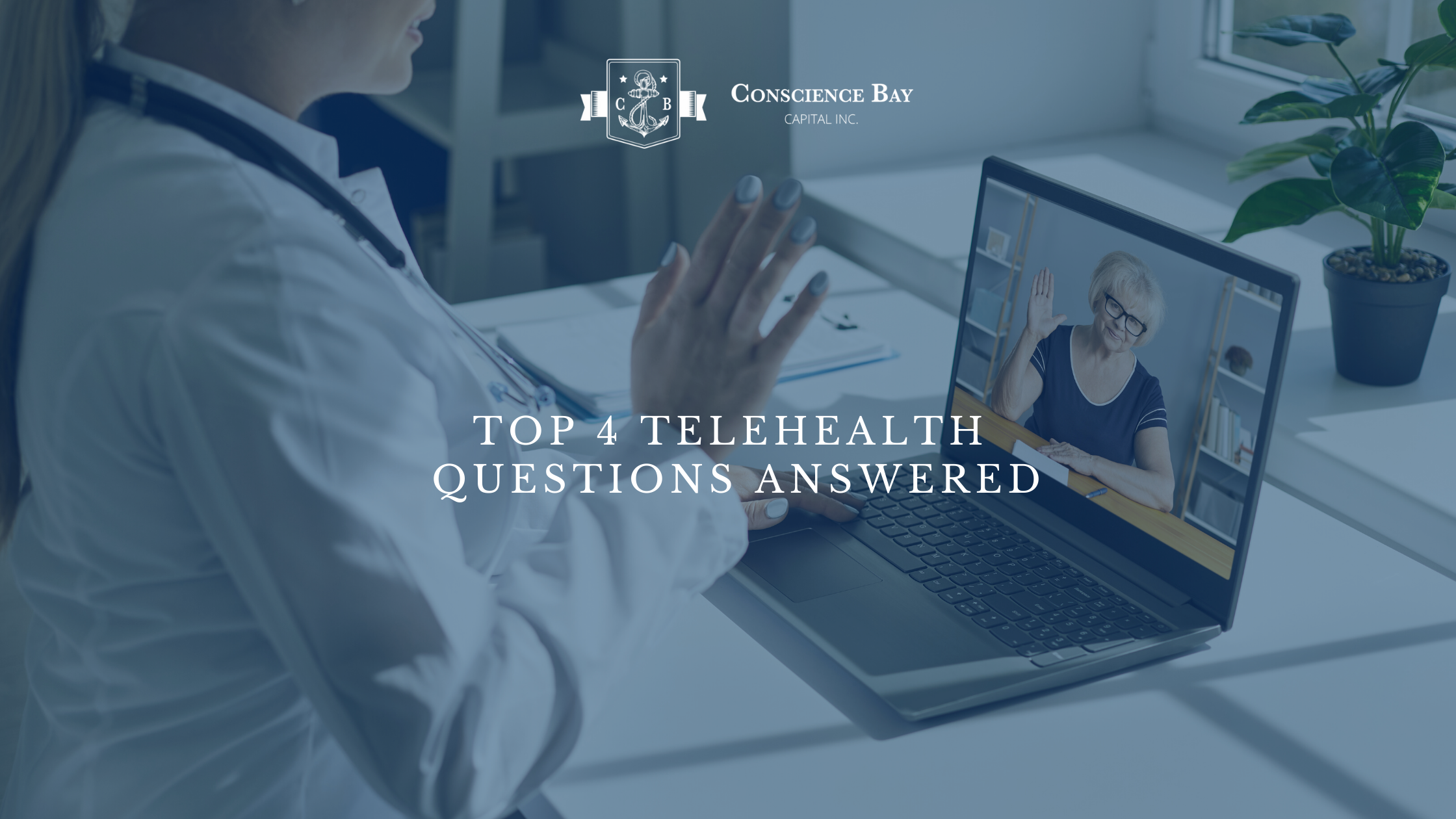Top 4 Telehealth Questions Answered
Submitted by Financial Investment Management | Conscience Bay Capital on November 1st, 2021
The pandemic hasn’t put a stop to innovations and adaptations in the healthcare industry. One of the largest innovations to come to the forefront, telehealth, is revolutionizing the way people interact with their physical and emotional health by bringing the provider to their home with the click of a button.
Doctors are able to diagnose, prescribe, and talk about health concerns or conduct routine visits through a virtual phone call or video chat — without the patient needing to leave their home. This can be a huge relief given that in-person visits are not necessarily the safest or most convenient option right now.
Anything new in medicine is ripe for skepticism. It’s the right of patients to feel comfortable and informed. Here are helpful suggestions for you if telehealth is an avenue you’re considering.
*Telehealth is not intended for emergency medical care. In an emergency situation, be sure to contact immediate medical assistance. For more information about licensed telehealth providers, contact your insurance provider.
Why is telehealth so popular?
Telehealth has been around since the 1990s, but it wasn’t widely used until the arrival of COVID-19. In many cases, in order for prescriptions to be filled, the patient must first check in with their doctor. This has helped fuel the advanced use of telehealth services. From prescription refills to more complex diagnostics, telehealth covers a variety of health needs, so a wide range of patients can benefit from this service. Especially during COVID-19, doctors are now able to see a higher volume of patients through telehealth and care for more people without the worry of potential infectious exposure.
Research demonstrates that it is promoting continuity of care, decreased costs, and improving self-management of medical conditions that require regular attention.
Is my medical information safe online?
Medical information is a big concern for people when considering telehealth. As with anything in technology, there are precautions you can take to better secure your private information. All of your medical information through telehealth services should remain confidential in compliance with HIPPA, so conversations during telehealth appointments are just as protected as in-person conversations with your provider.
Follow these tips to ensure the safety of your medical privacy:
- Do not sign up for online telehealth programs without first vetting the place. It’s best to avoid pop-up ads and stick with what your doctor or insurance company directly recommends. If it seems too good to be true, it probably is. Here are ways to ensure you are dealing with a responsible provider.
- They come directly through a trusted practice in your area you’ve used in-person.
- Your insurance company lists them on your policy as a possible provider.
- They are approved by the American Telemedicine Association (ATA). ATA is a non-profit organization developed to ensure safe practices and advancement of telehealth, and it has partnered with other organizations in response to COVID-19.
- Others you trust and know have used and recommended their service to you. Word of mouth is not the most reliable, but it can be a useful starting point in finding your telehealth match.
- Write your questions, concerns, and any appointment notes down on a piece of paper rather than typing them and storing them away. Shred the paper after you’re done with it.
- Before any appointment, check that the email with your link to the appointment mentions that the service the medical provider is using for the appointment is secure.
- Download and utilize a VPN (a virtual private network). This establishes a secure and encrypted connection to provide greater privacy over your Wi-Fi. You can purchase a VPN provider online, and most have money-back guarantee trials.
- Use headphones during your appointment to avoid anyone overhearing what you want to remain personal. Close your door and let others in the home know that you’d like a space to yourself during this time.
How can telehealth diagnose anything without physically seeing me?
Obviously, the doctor or service provider won’t be able to do a physical examination through the screen to evaluate your symptoms but keeping your own log of symptoms and relaying this to the doctor can help them tremendously in their diagnosis. Providers are trained to recognize patterns and listen well.
Does telehealth cost more or less than a traditional doctor’s visit?
It still may cost the same for a copay depending on your insurance, however, some services like online therapy can be comparably less. Consider what you’re saving by not having to take off from work, in gas money, and in childcare costs. Some telehealth providers are finding ways to accept those without insurance while keeping reasonable costs.
Times are tough and access to care can be stressful. Additional resources like HHS can give the most up-to-date information on the status of telehealth operations, as regulations are constantly changing.
LPL Tracking #1-05176130

